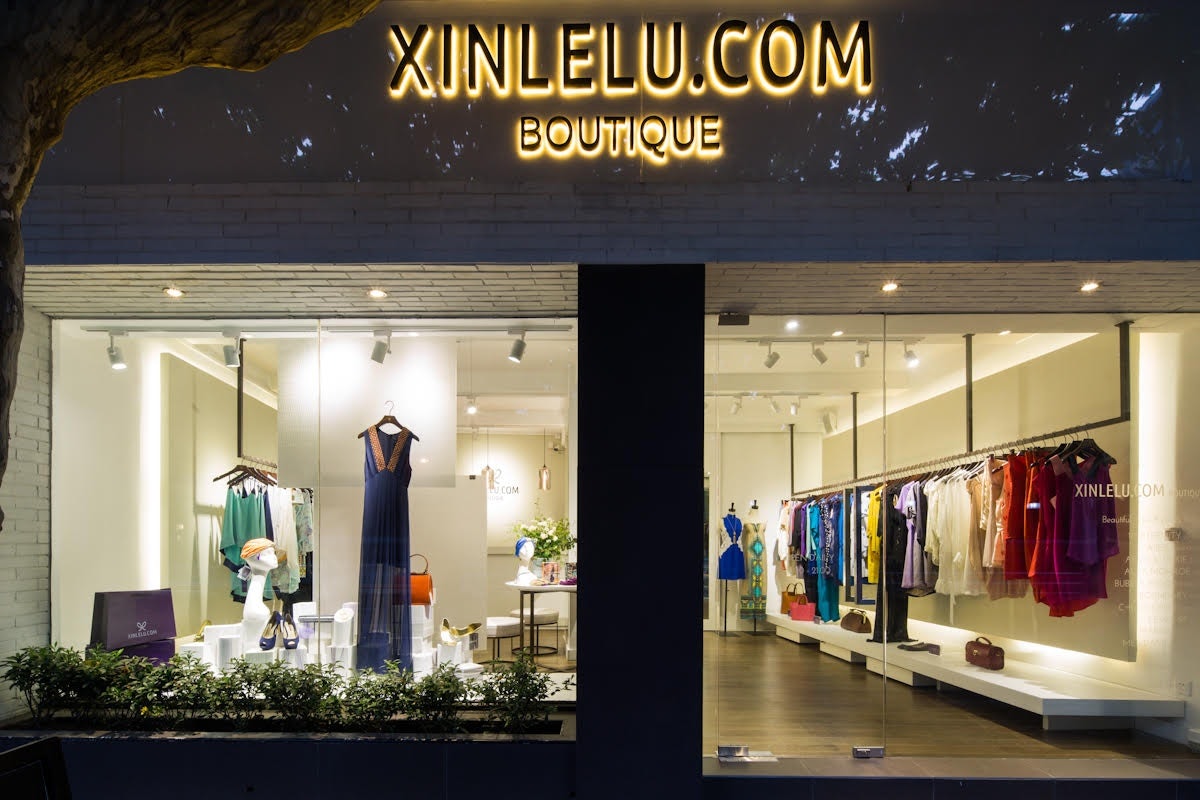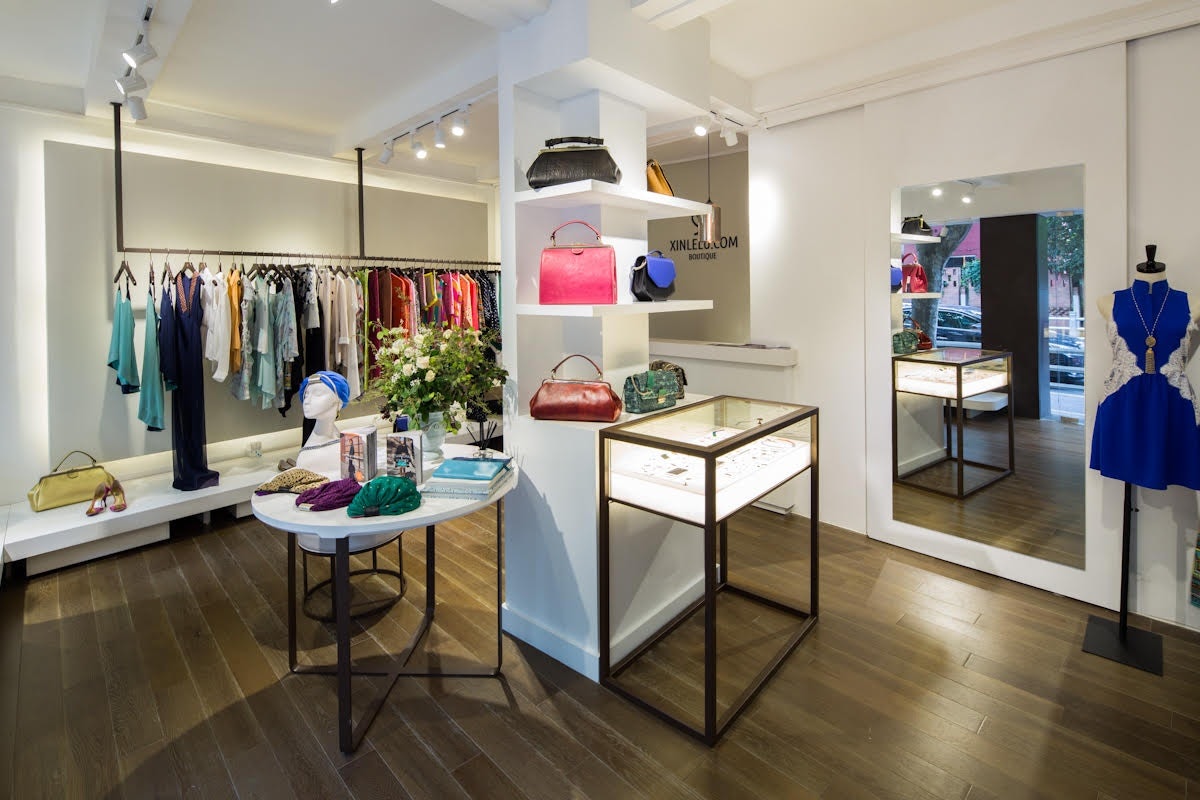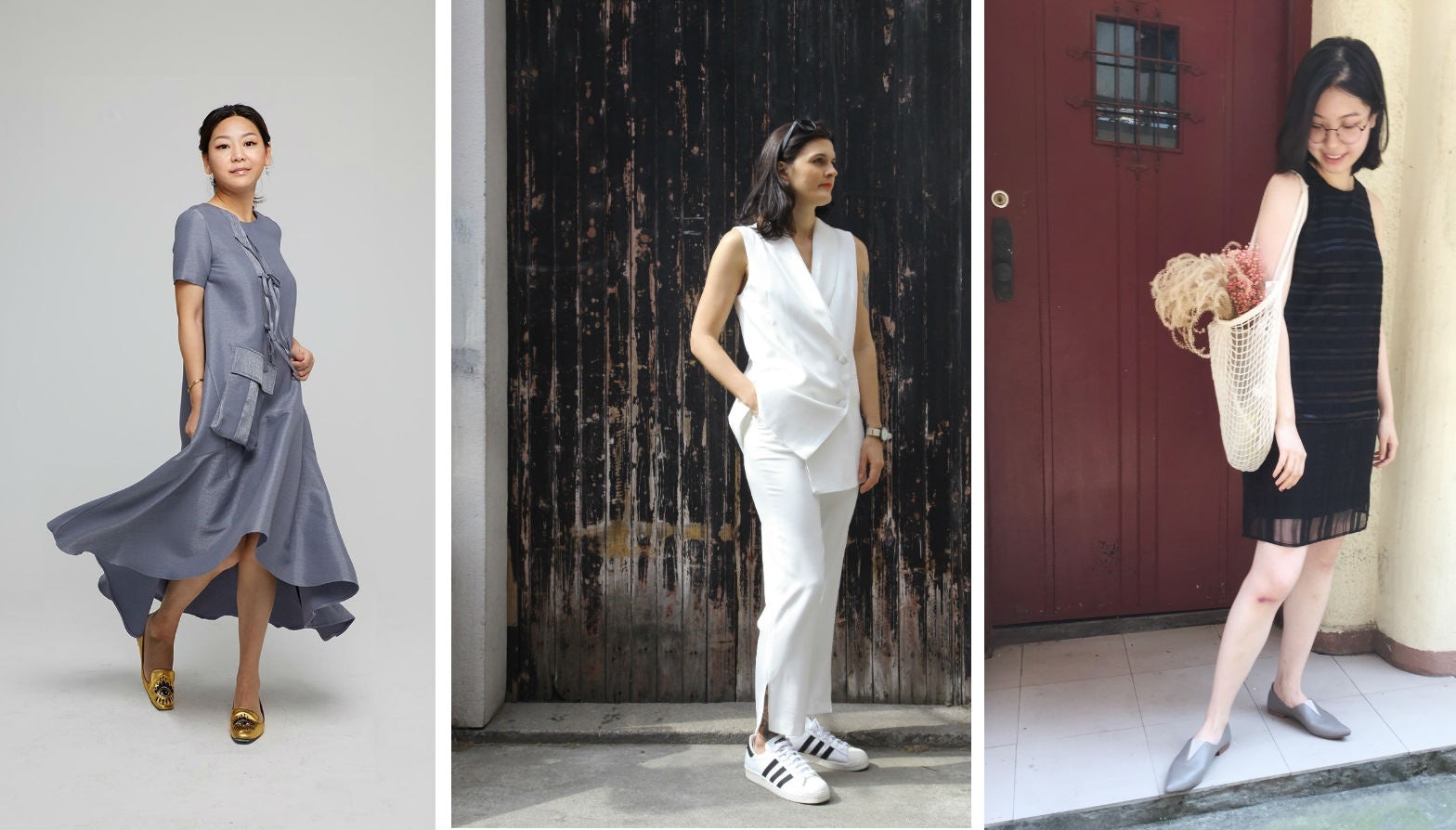As multi-brand boutiques multiply in China in response to a strong consumer desire to discover lesser-known international brands, Xinlelu.com has been a standout on multiple fronts. Brick-and-mortar locations tend to serve as experience zones as well as storefronts, an essential building block in cultivating brand characteristics employed by well-known multibrand stores like Barneys and Collete. However, much of this brand cultivation at Xinle Lu is done online rather than offline, and molded through a strong WeChat community and content.
Whereas many of its peers have chosen flashier locations in Shanghai’s upscale Xintiandi area or Beijing’s Sanlitun North as a main storefront for experience and showcasing wares, Xinle Lu is tucked away on a quieter road in the Former French Concession, opting to share foot traffic with local expat locales.
This is reflective of the store’s contrast with other multi-brand boutiques like Ooak, Attos, and Graceland, as the store focuses on lesser-known independent designers. Rather than offering the younger-sister lines of famous retail names (e.g. Red Valentino, Sonia, See by Chloe, etc.) or stalwarts frequented by fashion lovers (e.g. Blumarine, J.W. Anderson, Sophie Hulme, etc.), the Xinle Lu team aims to work with approachable designers who sell at a lower price range. This is not because many of its consumers eschew big luxury names. Rather, Xinle Lu’s niche consumer is a small but growing base of a sophisticated, professional Shanghainese women who are fashion- and travel-curious.

Jing Daily spoke with Yilei Wu, co-founder and partner of Xinle Lu about the boutique’s growth since its repositioning in 2014, the store’s offline-online strategy, WeChat’s role in its business strategy, and the characteristics of its savvy, fast-growing urban customer base.
How did Xinle Lu come to be and how has it evolved in to the store it is today?#
Xinle Lu started in 2011 when Jillian Xin [Xinle Lu’s co-founder] approached me to include my Shanghai-based label in her new venture focused on independent designers. We came from completely different backgrounds, Jill from finance and I from marketing and fashion. We actually launched the website first because our ambitions were in e-commerce, but then realized we were kind of new to the China market because there weren’t many independent designer brands around.
At that we point we decided to open an offline location for the experience and to build understanding among our customer base. We were fortunate because we found an ideal space for our boutique in the Former French Concession, a beautiful location with a garden.

From that point on, we were an online and offline store. When we started, 80 percent of our customers were expats based in Shanghai. Our customers were women who were interested in independent designers before they came to China and wanted to continue discovering them.
How does this differ from Xinle Lu today?#
We repositioned Xinle Lu in 2014 when Jillian left China for Hong Kong, and a new investor came on board as well. Up until that point, I had been doing more of our marketing but then took over the business. We also rebranded and restructured our team to meet the needs of the market. At that point, we felt like Xinle Lu needed different positioning. So today, most of our team is comprised of Shanghainese girls, and most of our customers are Shanghainese professional women around their 30s. Of course, we continue to have expat customers. We also moved the store to a different storefront in the Former French Concession.
This move also introduced new concepts to our store brand. We cut quite a few brands from our roster and added in new ones so that the mix comprised both local and overseas designers. In addition, we engage with both expats and Chinese customers to build a community.
How have you been building Xinle Lu’s community?#
Two years ago, we started to focus more on WeChat, and created both customer service and public accounts. [Editor’s note: The purpose for running both accounts differs depending on the level of interaction a brand needs with followers.]
We have one account called Xinle Lu Girls, and many of these followers are now our good friends. We post our latest collections on this account and also share the personal stories of our customers. Many of these women have inspiring stories, and I want to share them with our audience. In fact, the interviews receive a lot of attention, not just among a Shanghai-based audience but around the country. My customers tend to be interested more in stories of ordinary women, rather than celebrities, as they serve as real role models.
Many of our customers find us through word of mouth. Marketing is still in its early stages in China. It is a huge market, but oversaturated. I do think international brands targeting the middle class in China don’t understand the kind of lifestyle and philosophy that our customers have. In fact, the local brands also don’t understand this, so that is our opportunity.
We also do deliver overseas as many customers continue shopping with us when they are abroad. They order from the website and know the team quite well. Most of our online sales actually come from expat men, often when they are looking for gifts. They feel awkward coming to a womenswear store.
What kind of lifestyle does Xinle Lu tend to focus on?#
The lifestyle I mentioned [traveling abroad often, modern professional, etc.] has to do with me and my background in broadcast journalism. Our customers share in this aesthetic of being contemporary Shanghai girls—they have authority and strength, and they enjoy being single, going out, and finding new opportunities.
In China, women are subject to many stereotypes. The modern Shanghainese woman is daring and confident, and does not feel the need to wear anything loud to attract attention. They are independent and self-confident and know what they want.
How does the physical store and offline events factor in to this social community?#
We’ve been experimenting with this for the last two-and-a-half years. We ran a series of offline events because I believe in interpersonal engagement. We used to run a monthly designer weekend event, where we would bring in designers to the store to meet customers. We also ran different events throughout the year as well, including one to two big events and branding events. For example, we held an event in [private Shanghai club] Kee Club that included runway shows, auctions, and other activities. Other activities include twice-a-year closet swaps, trunk shows and pre-orders, and sales events. We keep things really straightforward though. If it is a sales event, then our objective is sales. But if it is for branding, then we keep it fun and easy for networking.
Strategy-wise, we are now aiming to drive traffic to WeChat as a destination. In the last five years, we saw traffic go from newsletter to website to WeChat to Weibo, but now we want to drive this back to WeChat. It is too bad Instagram and Pinterest are not in China---WeChat is not a perfect platform for us, but it is good for now.
In 2017, we will likely focus more on website maintenance and building WeChat and Instagram. We will not be working on Weibo because the platform is not an efficient way to reach and engage with our customers. Weibo is acceptable for reaching shoppers born after 1990, but our women are older than that.
Can you describe your target customer now? What kind of woman is she?#
When we first started in 2011, we did not have a specific customer in mind. But we did see some recurring characteristics among our customers that fit a certain profile. For example, 80 to 90 percent of our customers have lived at least one to two years abroad and are open to new designers and new lifestyles. They tend to be working professionals as well.
Is this reflected in the types of brands and looks you buy, and the price points you offer?#
Yes. Many boutiques in China work with more avant grade designers that have louder designs. But most of our customers work in large multinationals and have to spend a lot of time in corporate settings, so we choose more interesting details and designs rather than strong colors that would stand out too loudly. Our core customer base is in their 30s, and depending on their lifestyles, some are in their 40s and 50s as well. We even have younger customers like university students too.
Our price point is roughly US$72 for intimates to US$900 for outerwear. That is higher than Massimo Dutti, but lower than Theory, Maje and Sandro [brands popular with professional women in China].
How do you select and curate the brands you work with?#
We actually are approached by many brands. Five years ago, this tended to be through trade shows. But we are actually lucky to be a bilingual boutique with a bilingual website, and have had international brands approaching us every day.
Choosing the right designers to work with is complicated, and we have met with many brands. the difficulty is in bringing overseas brands to China. The brands may not be interested in giving you the educational tour, but I do care about working with the right people, more than just the fashion. For us, it is not just working with the designer’s collection but the designer as well, and we have become friends with the designers we work with. This way, we are able to give them feedback as well.
Many of the designers we work with have a background in design, not just fashion. For example, the designer behind a brand we carry, Kunmanma, was an architect. I also prefer working with designers from different disciplinary backgrounds because they have different perspectives on fashion.
We also try to work with a wide range of people from different countries. I think many Chinese customers are very open to trying foreign brands, while we find expats here are interested in finding Chinese brands.
Do you work with designers who do not have a strong presence in China to reach Chinese women?#
Yes. Usually we focus [our marketing] on one or two brands each month. (We cannot promote everyone we work with.)
In 2017, we will continue to work more on scheduled promotions on a monthly basis. This is a tactic new to the China market, and I do not see it being used anywhere else in the country. For instance, instead of giving an end-of-the-season discount, we offer a beginning-of-the-season discount. I am quite proud of that, and we are trying to grow the tradition of it, the “if you don’t buy it now it will only get more expensive” way of promoting designs. The promotion usually will run for two to three weeks. Like I said, many of our customers are busy professionals, so we can give them some time to decide before the price drops back to normal retail rates.
Also starting this year, we will start working on exclusive productions and small batch productions.
How do looks in second- and third-tier cities in China differ from what is trendy in Shanghai?#
My observations tend to be limited to Beijing and Shanghai. But styles I have seen in independent boutiques in tier two cities tend to be heavier in prints, florals, and are louder, but also cheerful. These styles seem to be popular with housewives. In Shanghai, the aesthetic tends to be more driven by cool young kids, students and also urban, hip-hop styles. Very street-luxe.
How do you see the impact of "see-now-buy-now," and technology on fashion and lead times?#
My take on this is that only professional buyers really know how clothes will hang on the body. For most people, they are not able to tell just looking at the clothes how they will sit on a real woman. So [technology that enables you to see yourself in clothes] will definitely remain a prevalent trend in the next few years.
For us, we want to offer looks for more real women rather than models. On our WeChat service account, we post lookbooks of the team and our customers in the looks, rather than stylized photos of models. As a multi-brand boutique, we want to interpret the looks we buy. Most brands look great in the photos with styled and amazing models, but that is not real life. We want to interpret looks in terms of real women to make the clothes more accessible and familiar.
